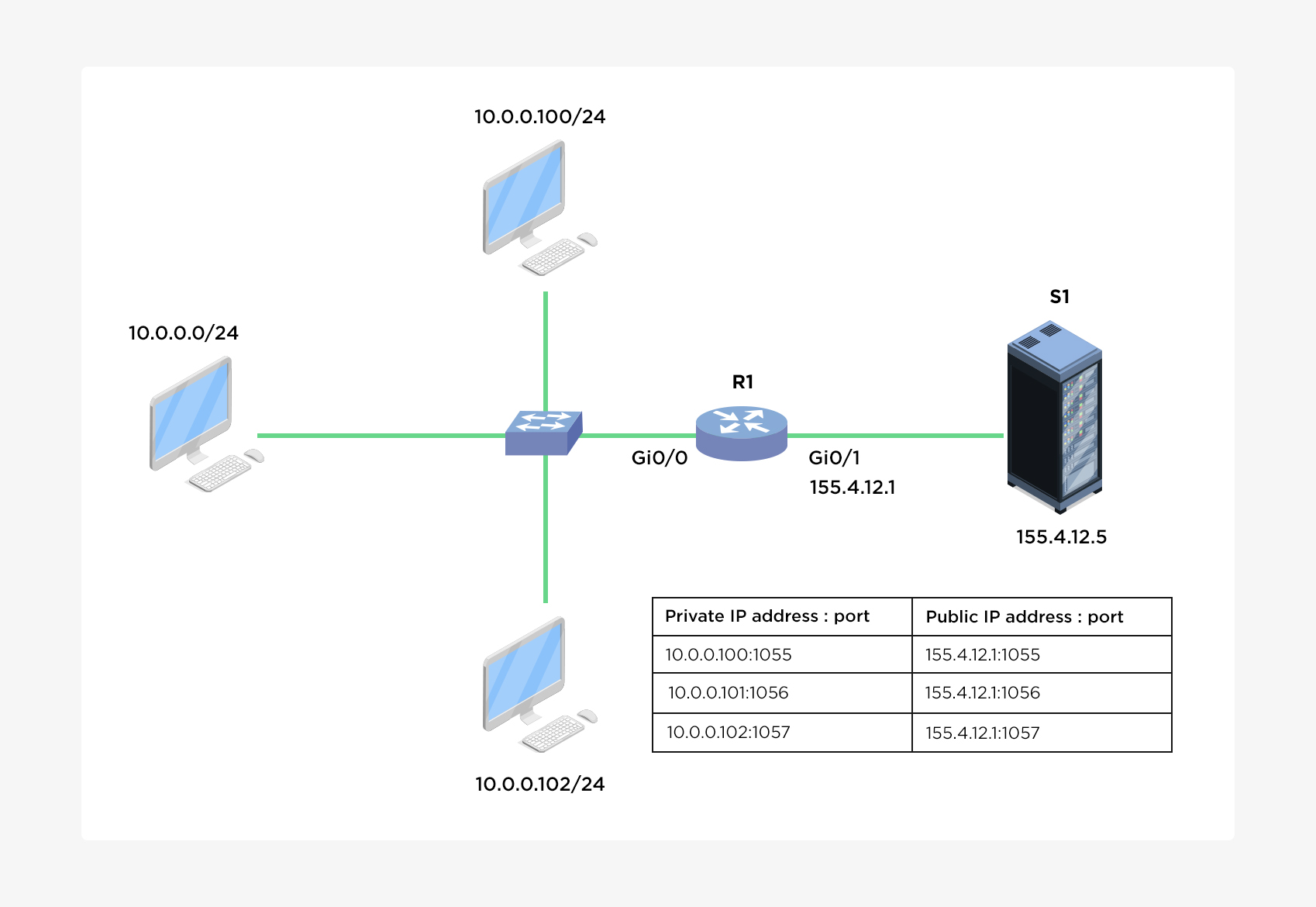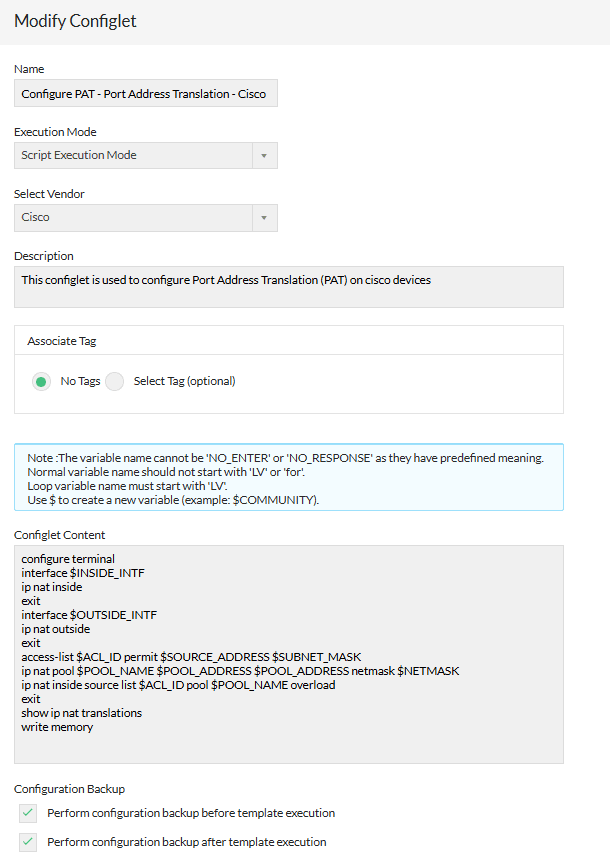With Port Address Translation (PAT), a single public IP address is used for all internal private IP addresses, but a different port is assigned to each private IP address. This type of NAT is also known as NAT Overload and is the typical form of NAT used in today’s networks. It is even supported by most consumer-grade routers.
PAT allows you to support many hosts with only few public IP addresses. It works by creating dynamic NAT mapping, in which a global (public) IP address and a unique port number are selected. The router keeps a NAT table entry for every unique combination of the private IP address and port, with translation to the global address and a unique port number.
You will be able to create the corresponding Configlet commands using Network Configuration Manager application. This will help you perform the same operation on multiple devices simultaneously.
If you don't have NCM installed, please click here to download and install the application.

Router#configure terminal
Enter configuration commands, one per line. End with CNTL/Z.
Router(config)#
Router(config)#interface Gi0/0
Router(config-if)#ip nat inside
Router(config-if)#exit
Router(config)#interface Gi0/1
Router(config-if)#ip nat outside
Router(config-if)#access-list 1 permit 10.0.0.0 0.0.0.255
Router(config-if)#exit
Router(config)#ip nat inside source list 1 interface Gi0/1 overload
Router(config)#exit
Router#
Notice that the same IP address (155.4.12.1) has been used to translate three private IP addresses (10.0.0.100, 10.0.0.101, and 10.0.0.102). The port number of the public IP address is unique for each connection. So when S1 responds to 155.4.12.1:1026, R1 look into its NAT translations table and forward the response to 10.0.0.102:1025
Router#write memory
Building configuration... [OK]
Router#
The corresponding configlet can be created in NCM application as shown in below screenshot.

Also you can click the below button to download the Configlet as XML and import it into NCM application using file import option.
| Configlet Name | Configure PAT - Port Address Translation - Cisco |
|---|---|
| Description | This configlet is used to configure Port Address Translation PAT on cisco devices |
| Execution Mode | Script Execution Mode |
| Configlet Content |
configure terminal
interface $INSIDE_INTF
ip nat inside
exit
interface $OUTSIDE_INTF
ip nat outside
exit
access-list $ACL_ID permit $SOURCE_ADDRESS $SUBNET_MASK
ip nat pool $POOL_NAME $POOL_ADDRESS $POOL_ADDRESS netmask $NETMASK
ip nat inside source list $ACL_ID pool $POOL_NAME overload
exit
show ip nat translations
write memory
|